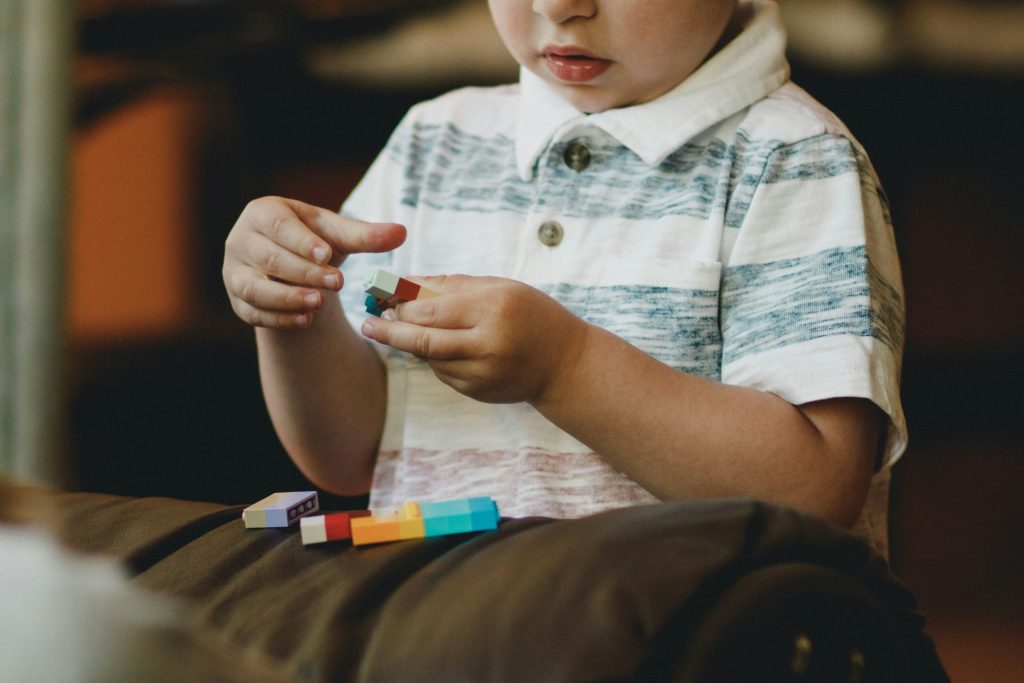Parenting an autistic child means endless questions, like “Is this autism, or is this developmental?” One thing many parents find themselves questioning is whether their child’s sensory sensitivities are a typical aspect of autism, or signs of SPD (Sensory Processing Disorder).
Sensory Processing Disorder is characterized by the brain’s difficulty in handling sensory input. This can manifest as oversensitivity to ordinary environmental stimuli, under-responsiveness that drives a child to seek out more sensory stimulation, or a combination of both. Sensitivities might affect motor skills, reactions to textures, or even pain responses, posing unique challenges in everyday tasks.
90 percent of those with autism also have SPD, though this is not reciprocal. What that means is if your child is on the autism spectrum, it is important to learn about Sensory Processing Disorder and how it might be impacting your child.
Identifying Signs of Sensory Processing Disorder
To determine if your child might also have SPD, you need to carefully observe their behaviors that potentially suggest difficulties with sensory integration. You may notice your child exhibiting heightened sensitivity or avoidance towards sensory stimuli, such as an aversion to certain textures, sounds, or even routine grooming practicings like hair brushing or bathing. On the other hand, you might see them actively seeking out stimuli through spinning, crashing into objects or people, or putting inedible objects in their mouth. Your child may also show a fight-or-flight response to overwhelming stimuli, reflecting an inability to process sensory input effectively.
SPD involves the traditional five senses, along with three others:
- Proprioception: the sense of your body position in space. A child seeking this input might crash into things often, hold objects tightly, or chew on inedible items.
- Vestibular: the sense that relates to balance and spatial orientation. Children with vestibular processing challenges might have trouble with activities that involve movement, such as swinging or spinning, and may either seek out these sensations or be fearful of them.
- Interoception: the sense that indicates physiological conditions, such as hunger, thirst, or the need to go to the bathroom. Children struggling with interoceptive processing may not recognize these internal cues effectively.
By recognizing these signs, you can help manage your child’s sensory needs more easily.
Behavior Patterns in Sensory Processing Disorder
Children with SPD may show behaviors that reflect hypersensitivity or hyposensitivity to sensory stimuli, or a combination of both.
Children described as hypersensitive are overly sensitive to stimuli most people can easily ignore. This can include reactions to loud noises, bright lights, or textures of clothing. Such children might seem anxious or fearful in environments they perceive as chaotic or overwhelming, and they may react strongly to unexpected touch.
Those who are described as hyposensitive may seek out intense sensory experiences. They may not react to pain as others do, could appear clumsy, and often have a hard time understanding personal space. These children might frequently touch people and objects to get the sensory input they need to feel grounded.
Managing Sensory Sensitivities
Supporting and managing sensory sensitivities involves structured environments and specialized therapies that improve the child’s ability to process sensory information. Creating predictable environments helps reduce sensory overstimulation.
Sensory Integration Therapy, typically provided by Occupational Therapists, is particularly beneficial, focusing on activities that help the child appropriately respond to sensory stimuli. This therapy often includes customized sensory activities designed to help your child gradually cope with sensory input, enhancing their ability to participate in daily activities.
Recognizing the signs of Sensory Processing Disorder in your child with autism allows for tailored interventions that can make a significant difference. With the right support, these children can achieve better sensory integration, leading to improved daily functioning and quality of life. To learn more about the personalized education and therapy plan Gersh Academy offers your child during the school day, reach out here.
Resources:

